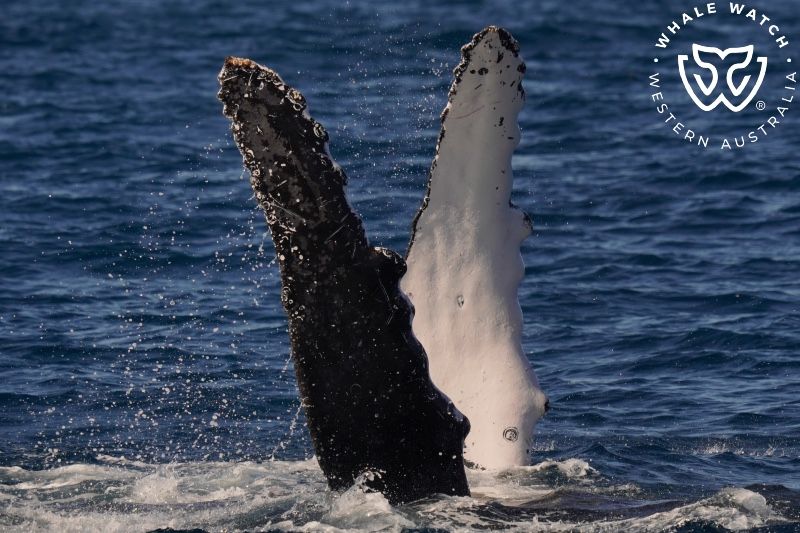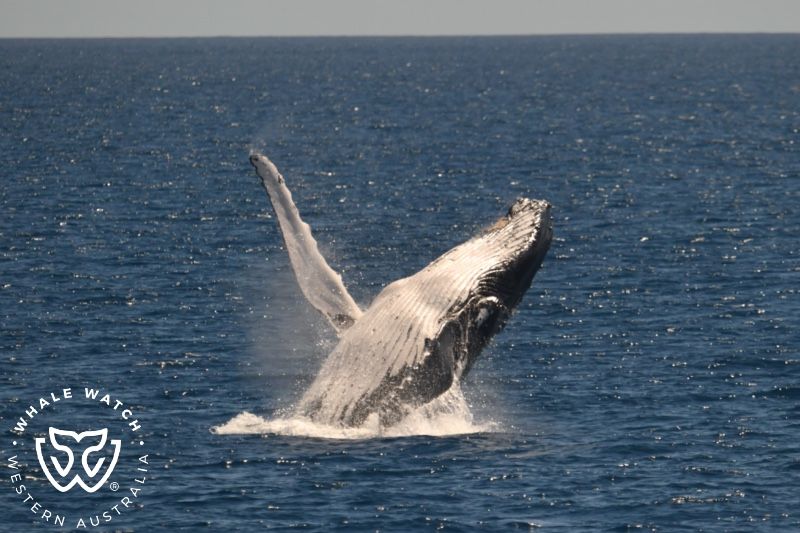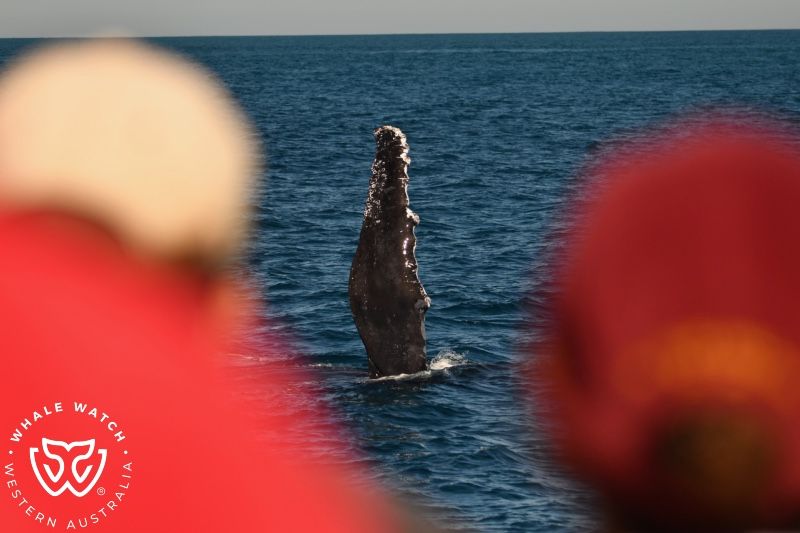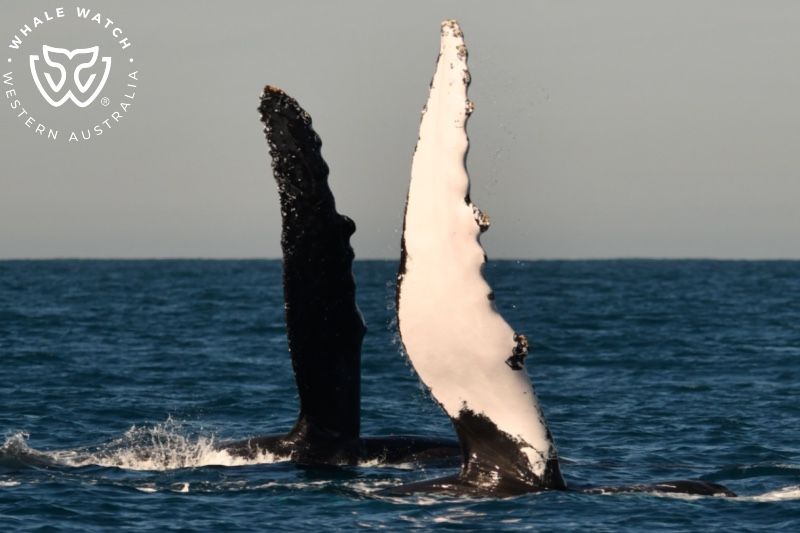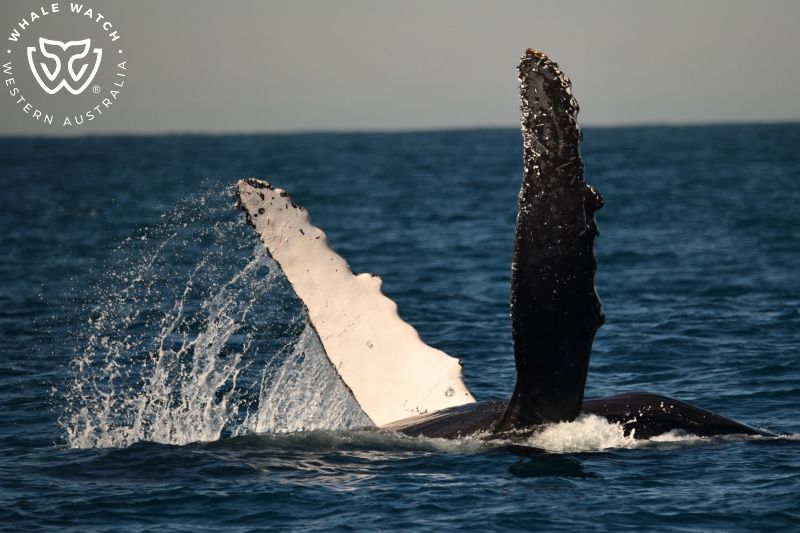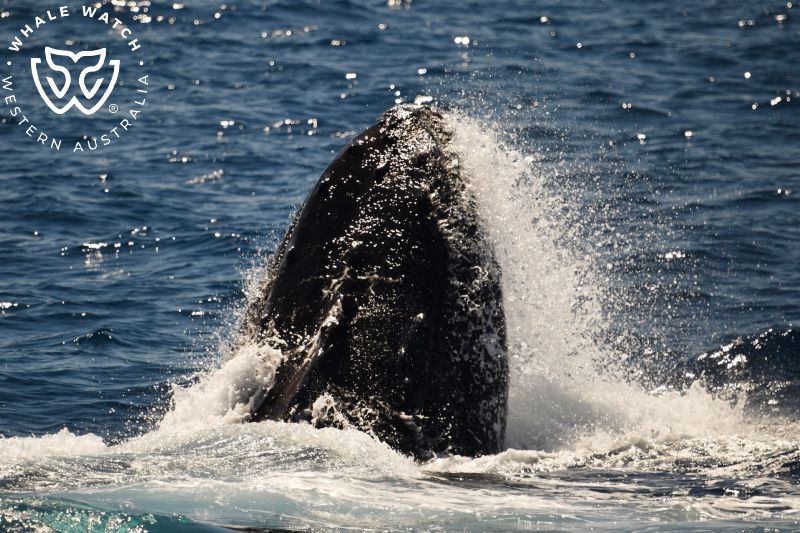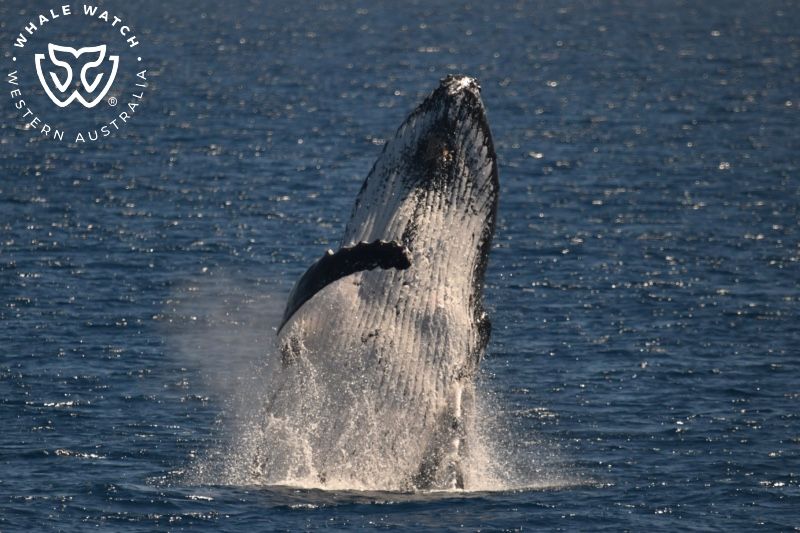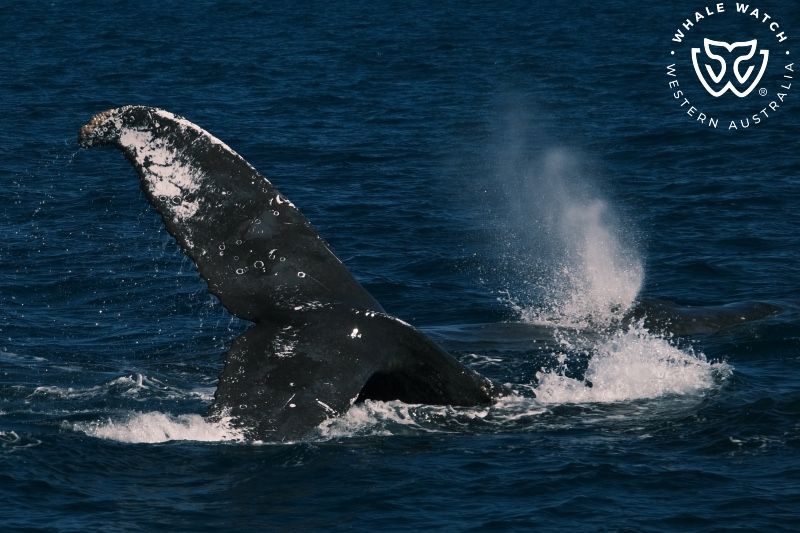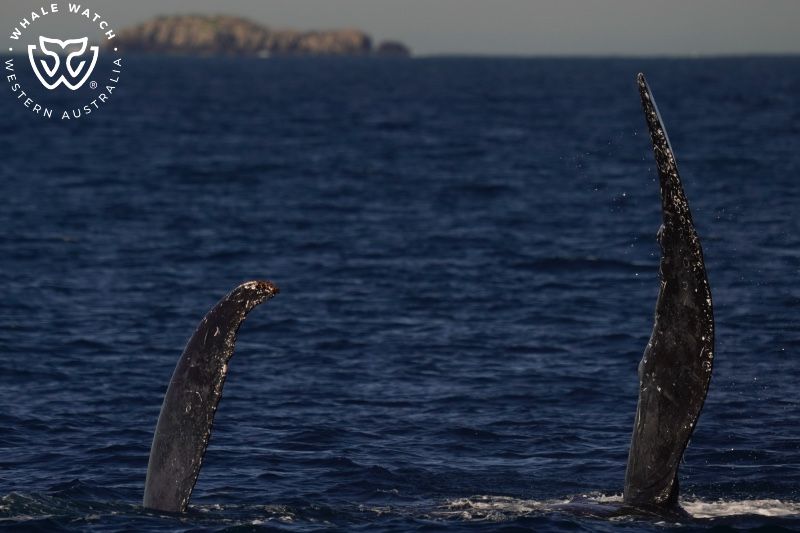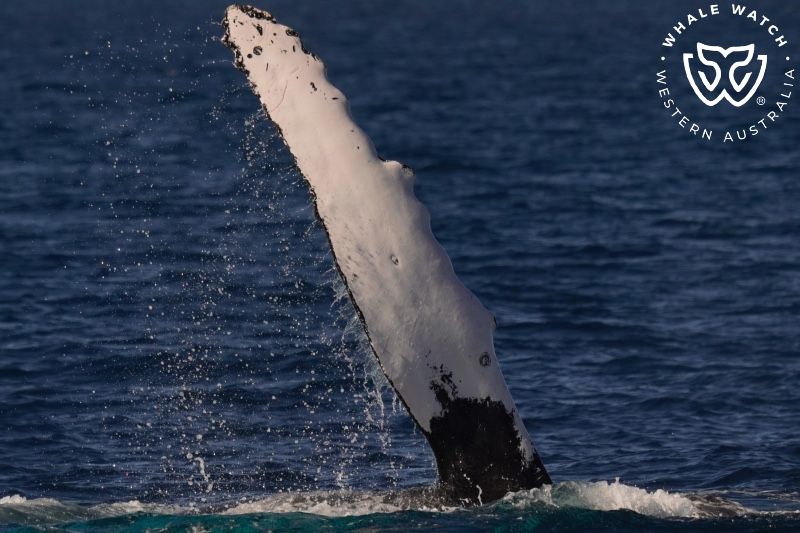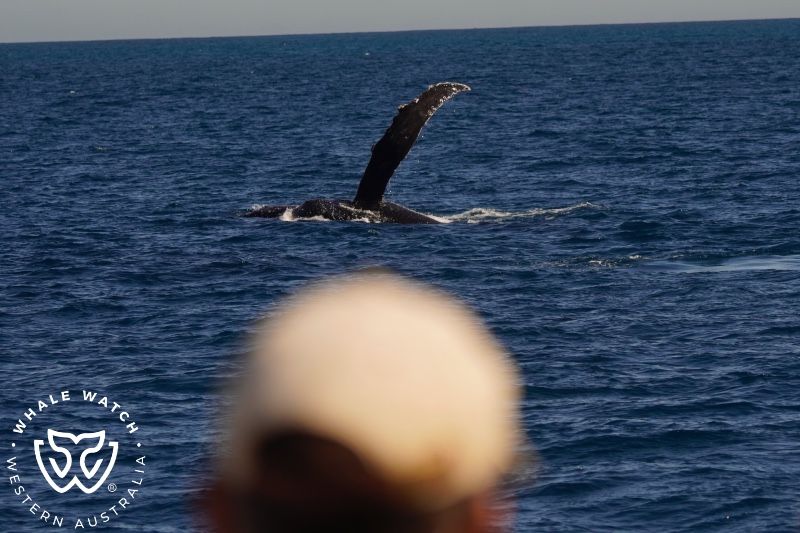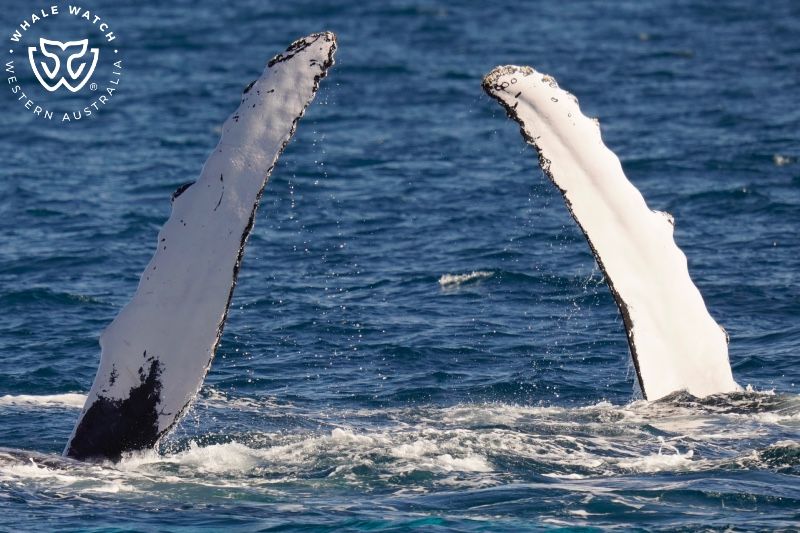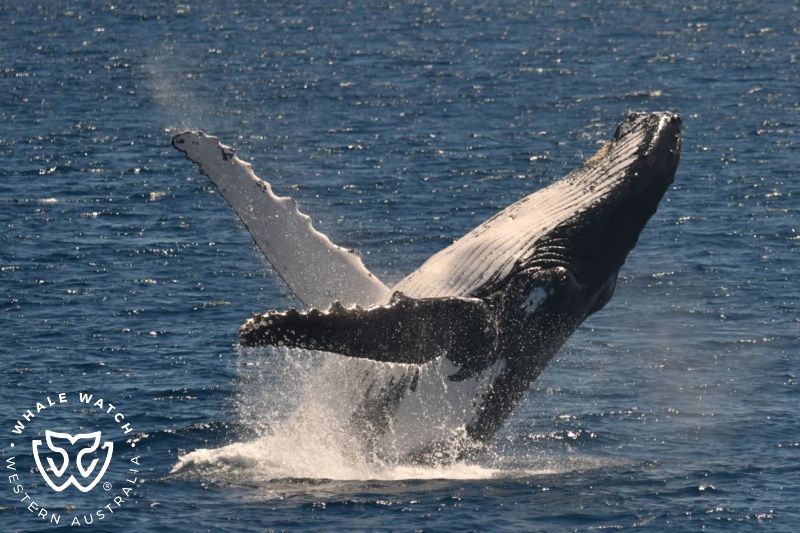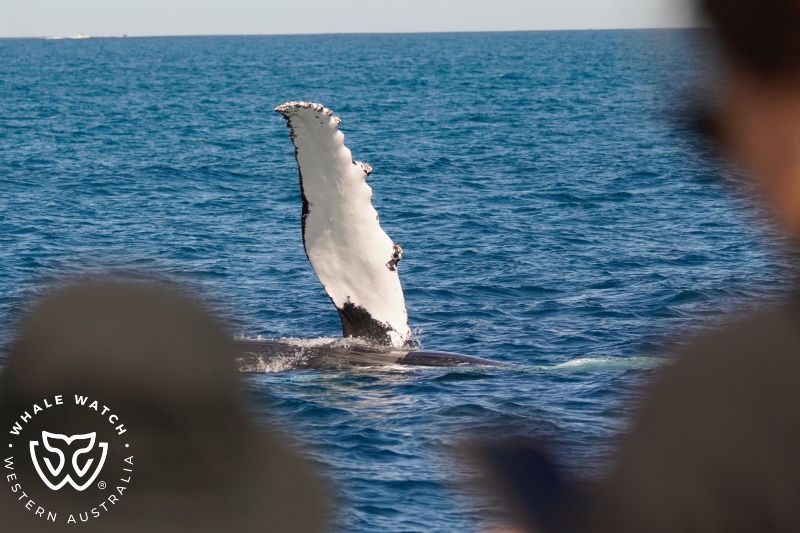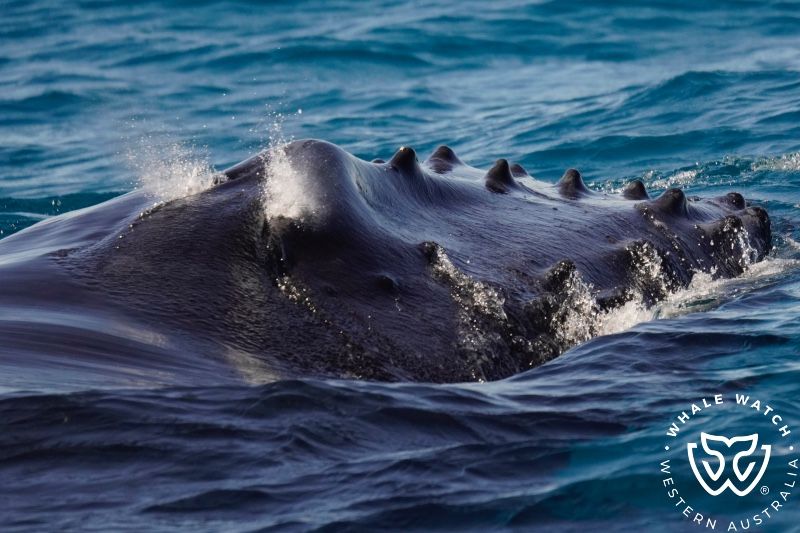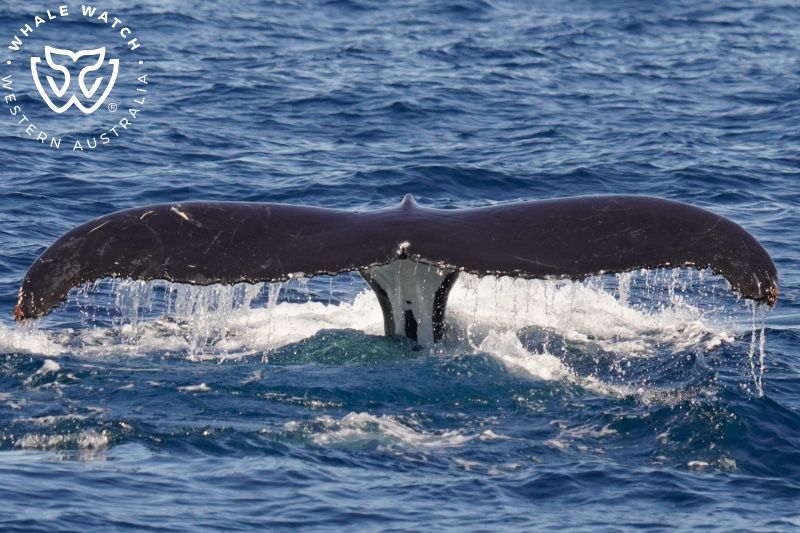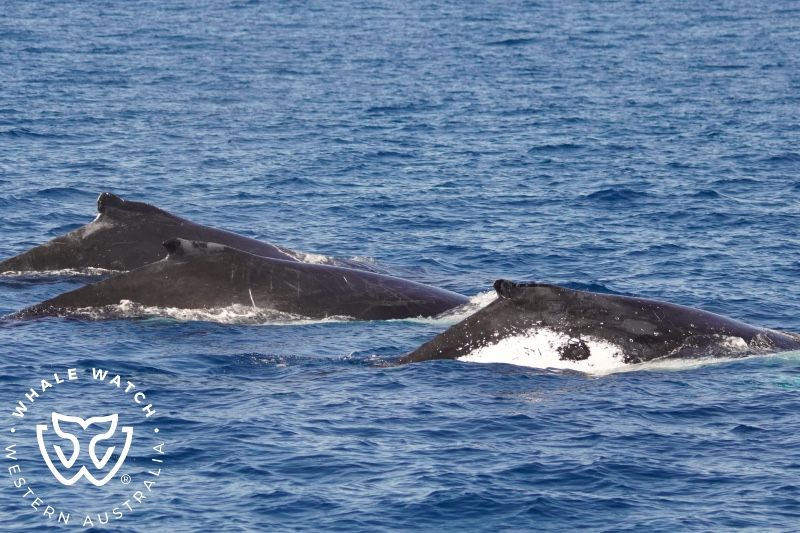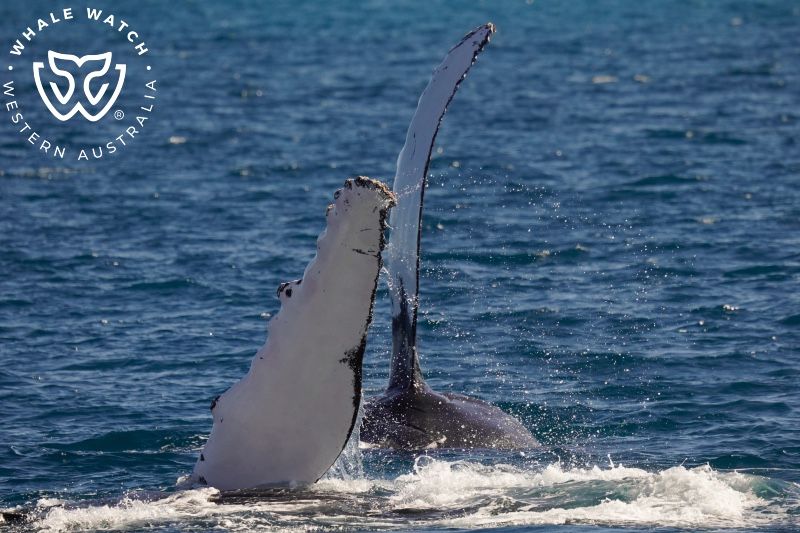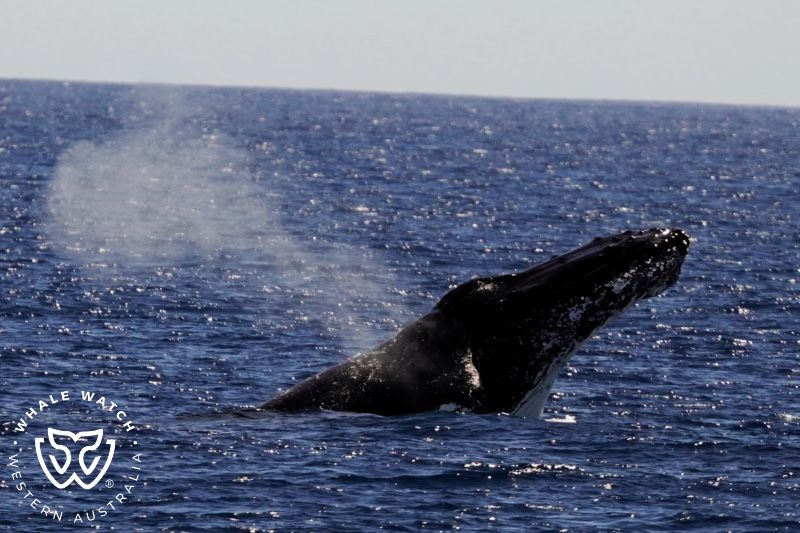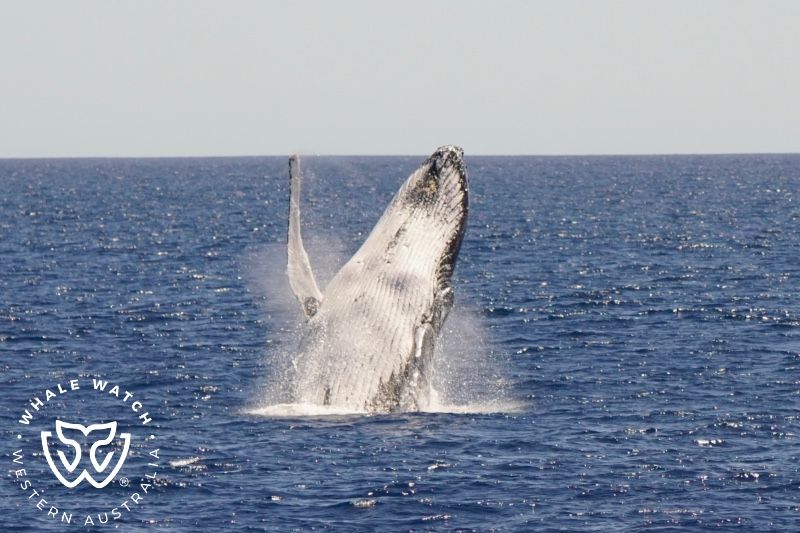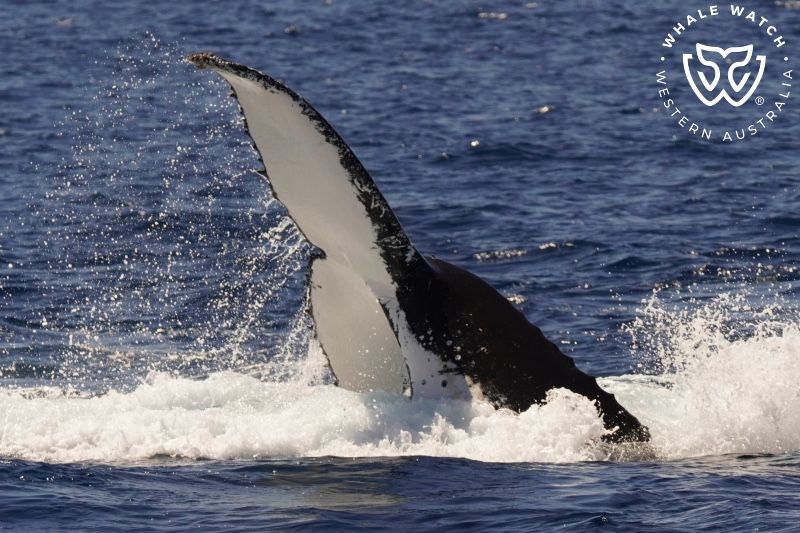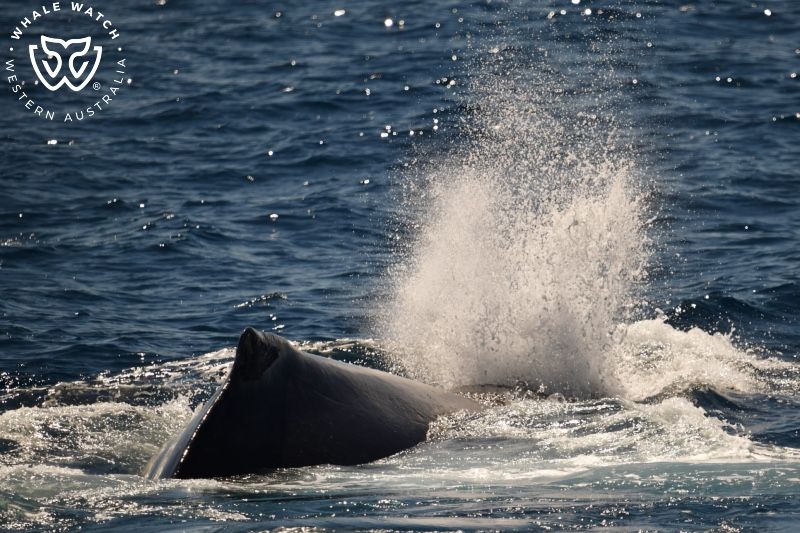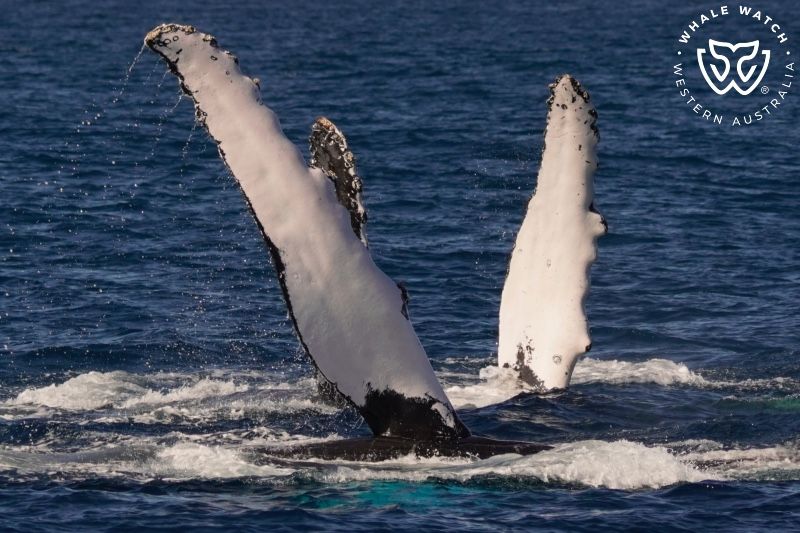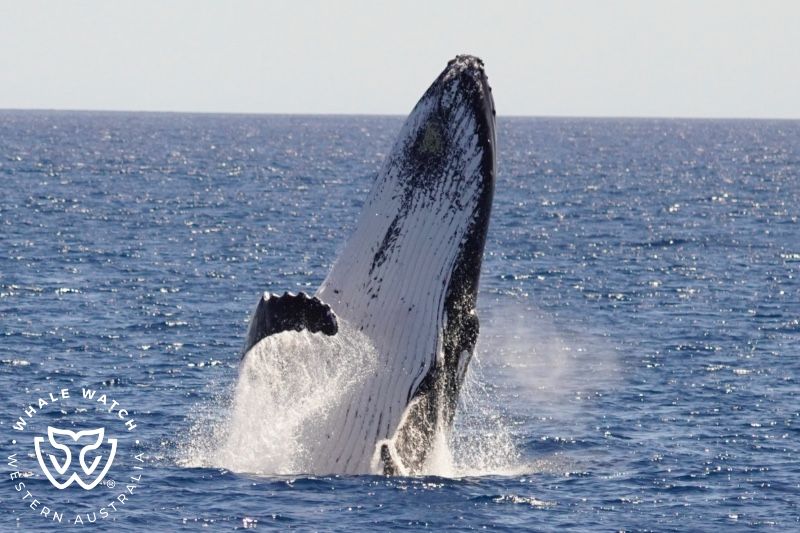Can You See Whales at Rottnest Island? Yes, you are able to observe sightings of whales from September to November each year as we sight the southern Humpback Whale migration along with extremely rare sightings of Blue Whales and Orca. Travelling closer to the coastline on these southbound journeys means sightings are more common as the Humpbacks seek shelter in the resting grounds and migrate past Rottnest Island. Generally you will observe distant blows, muffled white water and the black backs of the round-out dives of these whales. Sightings can be 500+ meters away to a few kilometres depending on the whales proximity to the island so binoculars are required for a clear view. For those wanting an educational close encounter and guaranteed whale sighting we recommend joining one of our Whale Watch Tours from Fremantle with daily departures from late August to mid November every year.
Today we were welcomed to the sightings grounds immediately as on our arrival two enormous adults were pec slapping away and calling in attention. It continued on this way for almost half an hour as we were in awe of their balance and coordination as they placed a thousand kilograms of weight in each pectoral fin gracefully onto the surface. It worked and soon we had a challenger male arrive on seen as their was a fuss as the boys chased each but it was the original primary escort who maintained his spot as in frustration the challenger tail lobbed as he moved away but angered nearby. There was a close call as two recreational vessels raced over the top of this pod on their way towards Rottnest Island and we were relieved there wasn’t a collision with these precious whales, thankfully the whales had much more sense than the small boat who had driven right over the top of them and remained submerged. It is vital when out on the water to watch for whales and not drive at high speeds directly towards a Whale Watch Research vessel to prevent such a situation occurring int he first place and putting both the whales and passengers onboard the recreational vessels lives at risk.
Moving towards us for shelter, the Humpback Whales regrouped before moving back out towards the reef line where they will depart the resting grounds and continue on their southbound migration. We were relieved that they were ok and handled the situation with poise, adult whales like these are experienced and can handle these situation much better than younger whales who can become flustered and make an error in there movements around fast moving vessels. The midday tour was a similar high energy as multiple pods moved through the sighting grounds and we had three competition pods all underway at the same time. The females were flirty as they gracefully launched into breaching and pec slapping to encourage the males and it worked as the bachelor boys raced over. A day which was energy filled and stunning displays of the Language of the Whales was enjoyed as they lit up the sighting grounds.




